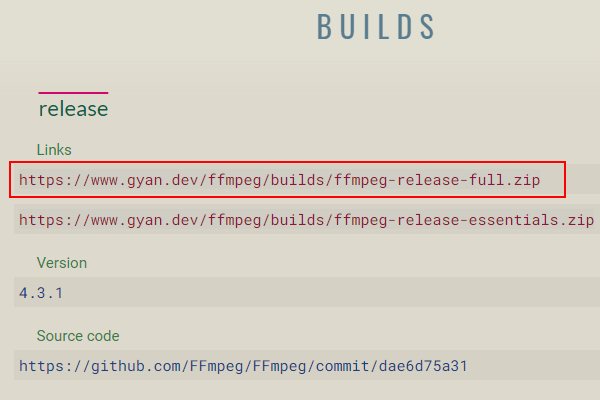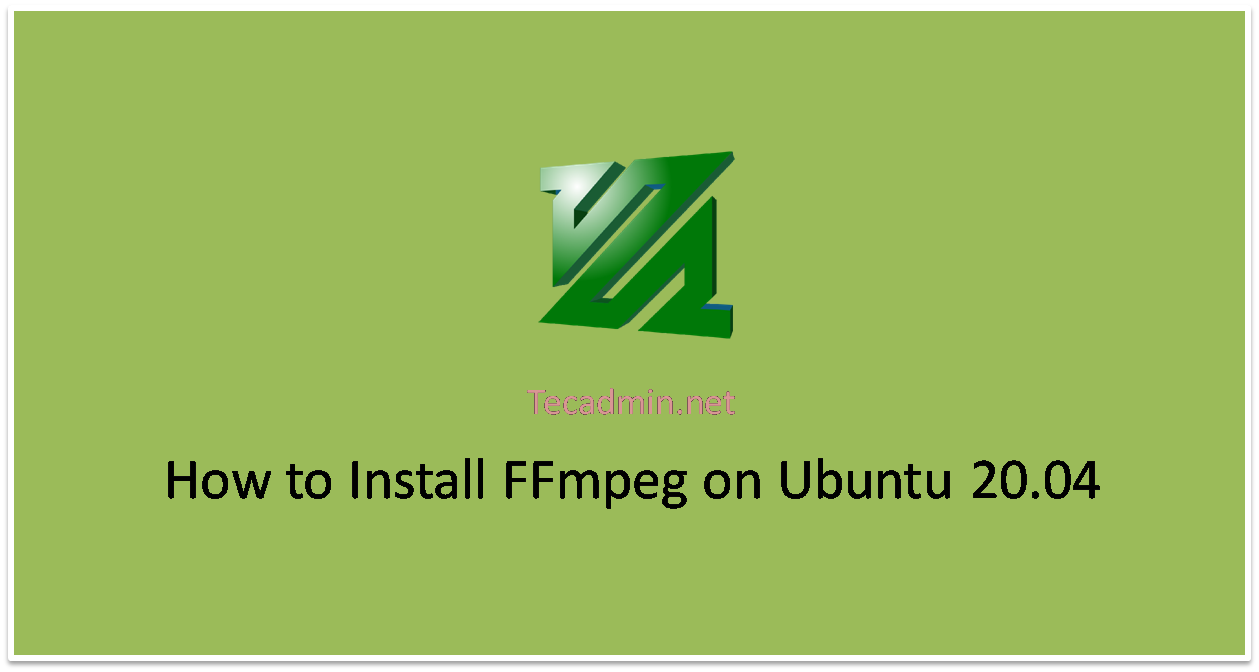

- #Install ffmpeg windows command line install#
- #Install ffmpeg windows command line archive#
- #Install ffmpeg windows command line software#
- #Install ffmpeg windows command line license#
- #Install ffmpeg windows command line download#
#Install ffmpeg windows command line download#
Once the download is done, open the directory where you stored the file. Here, you can find and download the compiled Debian package of the FFmpeg tool on the official website of FFmpeg.
#Install ffmpeg windows command line install#
It is the easiest way to install any package on Debian/Ubuntu. In this method, we will see how you can install the FFmpeg framework by downloading the.


Method 2: Install FFmpeg by Downloading the. You have to run the following aptitude command given below on your terminal shell to install the FFmpeg framework on your Ubuntu, Kali Linux, Linux Mint, and other Debian based Linux distributions. You can install the FFmpeg tool through the official repository of Linux. Method 1: Install FFmpeg on Debian Linux via the Linux Universe Repository Here, we will cover both the graphical user interface (GUI) and the command-line based (CLI) method of installing the FFmpeg on the Debian Linux. There are a few methods available that you can use to install the FFmpeg tool on your Debian distributions. Installing the FFmpeg tool on a Debian/Ubuntu Linux is a straightforward process. In this post, we will learn several methods of how you can install and get started with the FFmpeg tool on your Linux system. The FFmpeg functions with a demuxer, muxer, decoder, and an encoder that processes the input files and produces an output file of the media file.Īs FFmpeg is a famous and effective media library, many well-known media players and media conversion tools already use the library function of the FFmpeg tool inside their software.
#Install ffmpeg windows command line license#
It has the GNU GPL privacy license and available for GNU and Linux-based distributions. The FFmpeg tool is written in the C programming language. You can also use it for live streaming or feeding live media into a server. If (-not (Get-Command choco.You can directly use the FFmpeg tool on your Linux system through the command-line interface to convert, cut, join, and compress media files.
#Install ffmpeg windows command line archive#
zip to the filename to handle archive cmdlet limitations # Ensure Chocolatey is installed from your internal repository # $Chocolate圜entralManagementServiceSalt = "servicesalt" # $Chocolate圜entralManagementClientSalt = "clientsalt" # $Chocolate圜entralManagementUrl = " # ii. # If using CCM to manage Chocolatey, add the following: $ChocolateyDownloadUrl = "$($NugetRepositoryUrl.TrimEnd('/'))/package/chocolatey.0.12.1.nupkg" # This url should result in an immediate download when you navigate to it

# $RequestArguments.Credential = $NugetRepositor圜redential # ("password" | ConvertTo-SecureString -AsPlainText -Force) # If required, add the repository access credential here $NugetRepositoryUrl = "INTERNAL REPO URL" # Should be similar to what you see when you browse Your internal repository url (the main one). # We use this variable for future REST calls. ::SecurityProtocol = ::SecurityProtocol -bor 3072 # installed (.NET 4.5 is an in-place upgrade). NET 4.0, even though they are addressable if. # Use integers because the enumeration value for TLS 1.2 won't exist # Set TLS 1.2 (3072) as that is the minimum required by various up-to-date repositories. # We initialize a few things that are needed by this script - there are no other requirements. # You need to have downloaded the Chocolatey package as well. Download Chocolatey Package and Put on Internal Repository # # repositories and types from one server installation. # are repository servers and will give you the ability to manage multiple
#Install ffmpeg windows command line software#
# Chocolatey Software recommends Nexus, Artifactory Pro, or ProGet as they # generally really quick to set up and there are quite a few options. # You'll need an internal/private cloud repository you can use. Internal/Private Cloud Repository Set Up # # Here are the requirements necessary to ensure this is successful. Your use of the packages on this site means you understand they are not supported or guaranteed in any way. With any edition of Chocolatey (including the free open source edition), you can host your own packages and cache or internalize existing community packages. Packages offered here are subject to distribution rights, which means they may need to reach out further to the internet to the official locations to download files at runtime.įortunately, distribution rights do not apply for internal use. If you are an organization using Chocolatey, we want your experience to be fully reliable.ĭue to the nature of this publicly offered repository, reliability cannot be guaranteed. Human moderators who give final review and sign off.Security, consistency, and quality checking.ModerationĮvery version of each package undergoes a rigorous moderation process before it goes live that typically includes: Welcome to the Chocolatey Community Package Repository! The packages found in this section of the site are provided, maintained, and moderated by the community.


 0 kommentar(er)
0 kommentar(er)
